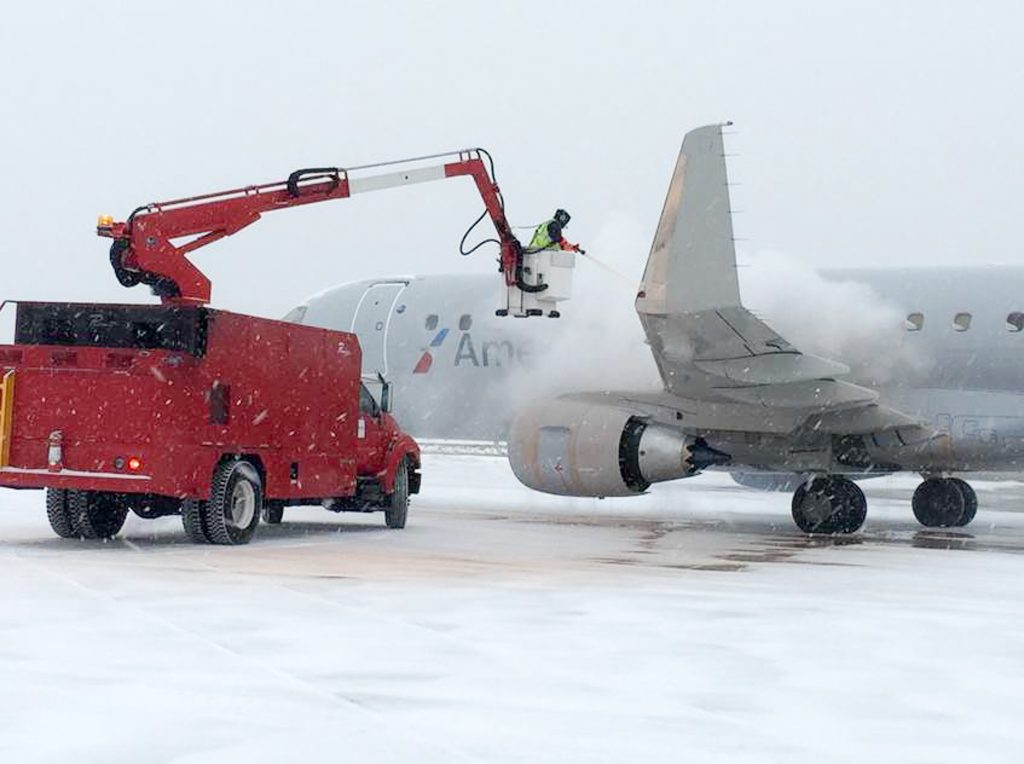Safety is always our top priority, especially when temperatures plummet and winter weather sets in. One critical process that keeps aircraft flying safely in icy conditions is deicing aircraft on the ground. Airport Services Policy & Procedures Manager, Danny Ortiz shares a closer look at what goes into this essential winter operation at Envoy.
Why Deice an Aircraft?
Deicing is crucial when temperatures hover around or below freezing, especially during precipitation or frost. Often, this is when an aircraft remains overnight at an airport ready to fly a morning flight the following day, but it can also be during sustained low temperatures and other winter weather conditions. Ice buildup on an aircraft’s wings and control surfaces increases drag and reduces lift, affecting the plane’s ability to take off. Spraying deicing fluid on these surfaces ensures optimal performance and safe flight operations in winter weather.
How Does Envoy Prepare for Deicing Season?
Preparation for deicing begins months before the first frost. Planning for the winter kicks off in January with a comprehensive review of training materials and operational manuals. In August, deice trainers undergo intensive training at specialized facilities. They then return to their stations to train operators responsible for deicing aircraft.
Meanwhile, Envoy’s Ground Support Equipment (GSE) team performs preventative maintenance checks on deicing equipment. Fluid samples are sent to certified labs to ensure compliance with manufacturer standards. Once all preparations are complete, Envoy’s official deicing season begins on October 1. On deicing days, operators perform fluid and equipment checks, heat the deicing fluid and gear up with protective equipment before safely deicing each aircraft.
What Is Deicing Fluid Made Of?
Envoy uses two main types of deicing fluids, both with a propylene glycol base:
- Type 1 is a orange, heated fluid that is less viscous and sprayed at high pressure to remove snow, ice, or frost from aircraft surfaces.
- Type 4 Fluid is a thick, green fluid is applied after Type 1 on a clean aircraft. It prevents new ice buildup while the plane taxis to the runway, ensuring a safe takeoff.
Where Does Deicing Happen?
Envoy operates deicing at 75 locations across our network to support the American Airlines operation and the American Eagle operators, including Envoy’s own Embraer 175/170 aircraft. Depending on the airport setup, deicing can occur:
- At the Gate: Right where passengers board and disembark.
- Pushback Areas: Directly behind the gate after pushback.
- Dedicated Deicing Pads: These range from simple concrete areas to fully equipped pads with control towers directing aircraft traffic.
Deicing Season by the Numbers
Envoy’s deicing season officially runs from October 1 to April 30, though some locations may start earlier or extend later depending on weather conditions. With responsibility for deicing both mainline and regional aircraft at our ground handling locations, Envoy deices thousands of planes each winter—ensuring that passengers can fly safely despite harsh winter weather.
Through months of preparation, advanced equipment, and a dedicated team, Envoy keeps winter flights running smoothly. Shout out to all our ground crews who brave the elements to keep us moving… Not all heroes wear capes, some wear safety vests. 😉

